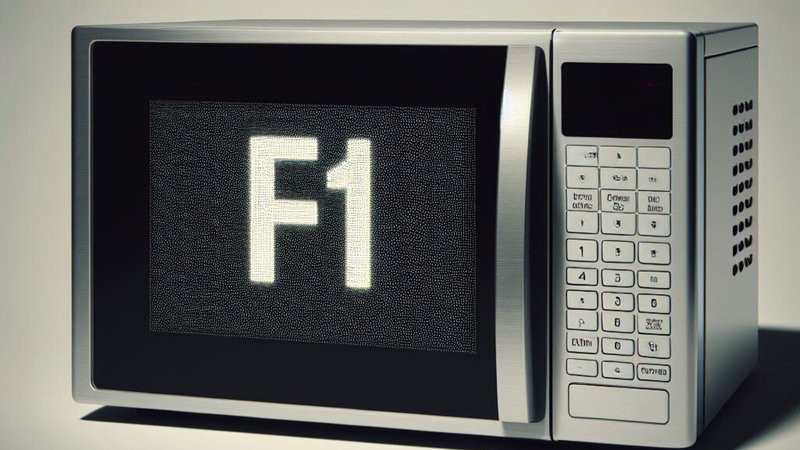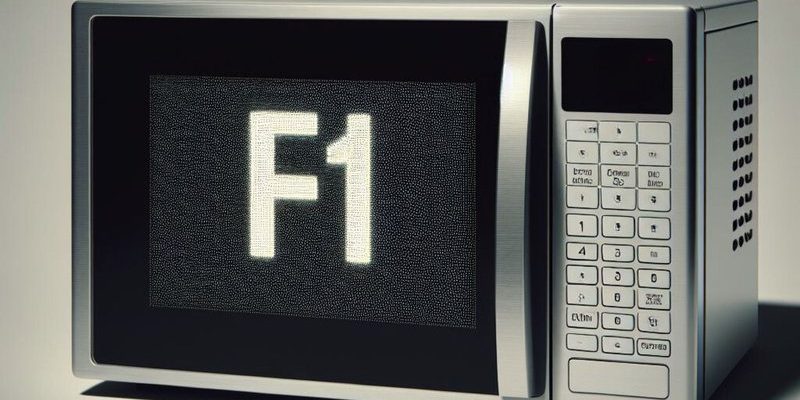
Error F1 on a GE microwave typically indicates a problem with the touchpad or control board. Think of it like having a stuck key on your computer keyboard—it just won’t respond the way it should. This might seem like a small inconvenience, but if left unfixed, it can become a bigger problem. The microwave might start to operate erratically, buttons won’t respond, or it could even completely stop working. Over time, ignoring Error F1 could lead to more complicated repairs or the need to replace the microwave altogether.
Understanding Error F1 in GE Microwaves
Error F1 is a signal that your microwave’s touchpad or control panel is malfunctioning. The touchpad is what you interact with every time you use your microwave—it’s how you tell it what to do. If this part isn’t working correctly, it’s like trying to use a phone with a cracked screen. Sometimes you can make it work, but often you’re left frustrated.
One common cause of Error F1 is simple wear and tear. Just like any other electronic device, the components in your microwave can get worn out over time. Exposure to heat, humidity, and constant usage can all contribute to this wear. Imagine your favorite pair of shoes; after wearing them every day, they’ll start to show signs of wear. Similarly, your microwave goes through a lot just sitting on your kitchen counter day in and day out.
Another possible cause is a short circuit or minor electrical glitch. This could happen suddenly, like when a light bulb burns out. Sometimes it’s just a one-time blip, but other times it can be persistent. In the case of F1, it’s more like your smoke detector beeping because the battery is low. It’s an alert that something needs attention before it gets worse.
Consequences of Ignoring Error F1
You might be tempted to ignore the F1 error, especially if your microwave seems to be working fine otherwise. However, letting this issue go unchecked can lead to bigger problems down the line. First, the microwave may start to behave unpredictably. One day it works fine, the next day it won’t start, or it may stop in the middle of cooking. This can be frustrating and disruptive to your daily routine.
If the error persists, it could mean that the underlying problem is getting worse. Electrical issues, in particular, can escalate quickly. A minor glitch could turn into a major failure, potentially short-circuiting other components of the microwave. This isn’t just inconvenient; it could also be a safety hazard, similar to leaving a small leak in your roof—it only gets worse with every storm.
Furthermore, if you delay addressing the error, you might find yourself needing more costly repairs in the future. What could have been a simple fix might turn into an expensive ordeal. Think of it like ignoring the check engine light in your car. At first, everything seems fine, but eventually, it could lead to a breakdown at the most inconvenient time.
How to Address and Prevent Error F1
So, what should you do if you see Error F1 on your GE microwave? The first step is to try a simple reset. Unplug the microwave for a few minutes, then plug it back in. This acts like restarting your computer when it’s acting up—sometimes, a fresh start is all it needs.
If the problem persists, it might be time to consult the user manual or contact GE customer support. They can provide specific guidance based on your model. In some cases, a skilled DIYer can open up the microwave to check for loose connections or replace the touchpad. However, due caution is needed, as microwaves store significant voltage even when unplugged.
In terms of prevention, keep your microwave clean and dry. Avoid excessive steam and moisture, as these can affect the electronics. Consider using a surge protector to prevent electrical issues, just like you would for your computer. These small steps can help extend the life of your microwave and keep it running smoothly.
Remember, while Error F1 might seem like a minor inconvenience, addressing it promptly can save you from headaches—and costs—in the long run. If you’re ever in doubt, reaching out to a professional is always a good choice. Maintenance is key, much like brushing and flossing to prevent dental issues. A little effort now can keep your kitchen running smoothly for years to come.
